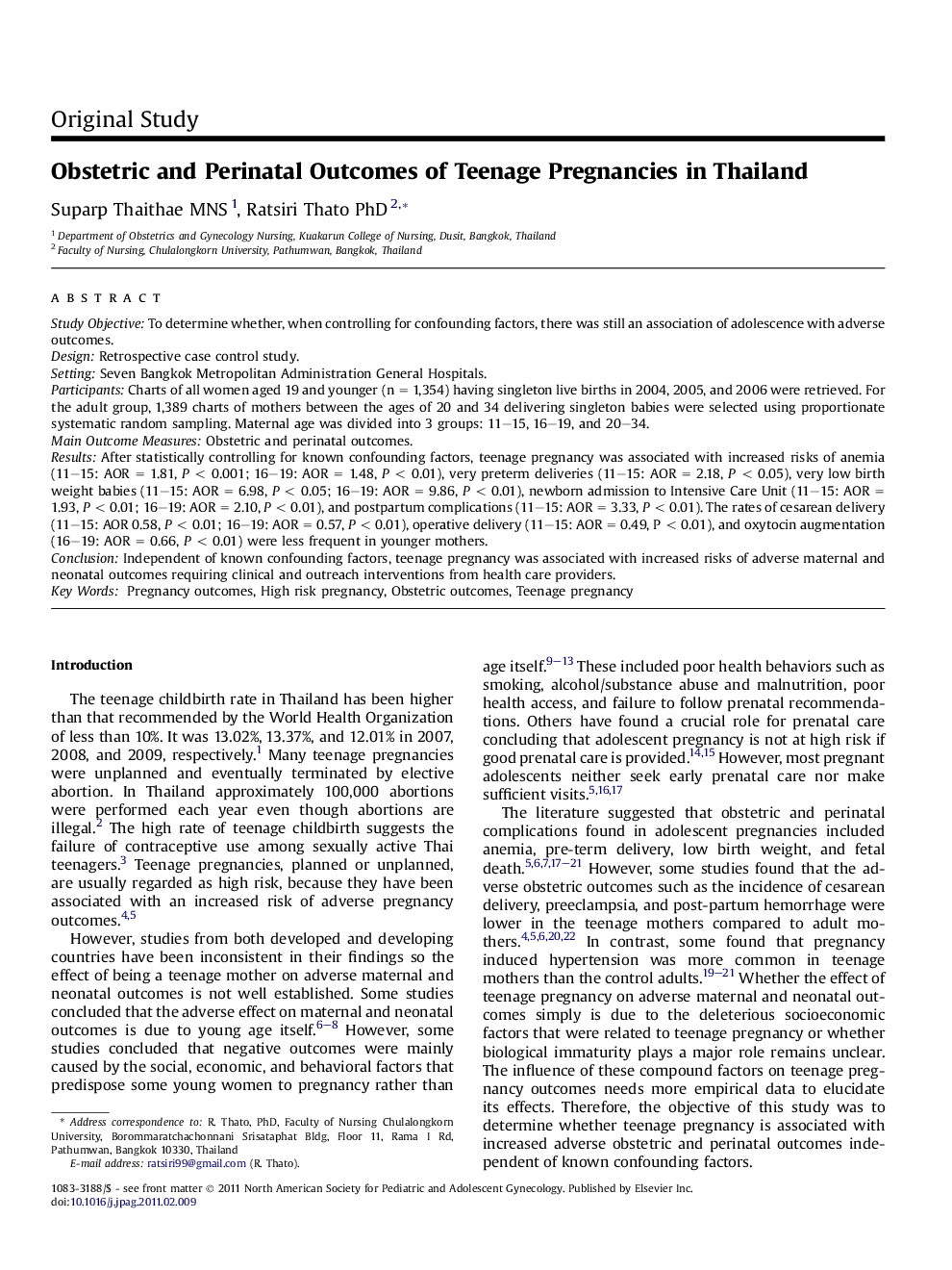| Article ID | Journal | Published Year | Pages | File Type |
|---|---|---|---|---|
| 3963006 | Journal of Pediatric and Adolescent Gynecology | 2011 | 5 Pages |
Study ObjectiveTo determine whether, when controlling for confounding factors, there was still an association of adolescence with adverse outcomes.DesignRetrospective case control study.SettingSeven Bangkok Metropolitan Administration General Hospitals.ParticipantsCharts of all women aged 19 and younger (n = 1,354) having singleton live births in 2004, 2005, and 2006 were retrieved. For the adult group, 1,389 charts of mothers between the ages of 20 and 34 delivering singleton babies were selected using proportionate systematic random sampling. Maternal age was divided into 3 groups: 11–15, 16–19, and 20–34.Main Outcome MeasuresObstetric and perinatal outcomes.ResultsAfter statistically controlling for known confounding factors, teenage pregnancy was associated with increased risks of anemia (11–15: AOR = 1.81, P < 0.001; 16–19: AOR = 1.48, P < 0.01), very preterm deliveries (11–15: AOR = 2.18, P < 0.05), very low birth weight babies (11–15: AOR = 6.98, P < 0.05; 16–19: AOR = 9.86, P < 0.01), newborn admission to Intensive Care Unit (11–15: AOR = 1.93, P < 0.01; 16–19: AOR = 2.10, P < 0.01), and postpartum complications (11–15: AOR = 3.33, P < 0.01). The rates of cesarean delivery (11–15: AOR 0.58, P < 0.01; 16–19: AOR = 0.57, P < 0.01), operative delivery (11–15: AOR = 0.49, P < 0.01), and oxytocin augmentation (16–19: AOR = 0.66, P < 0.01) were less frequent in younger mothers.ConclusionIndependent of known confounding factors, teenage pregnancy was associated with increased risks of adverse maternal and neonatal outcomes requiring clinical and outreach interventions from health care providers.
